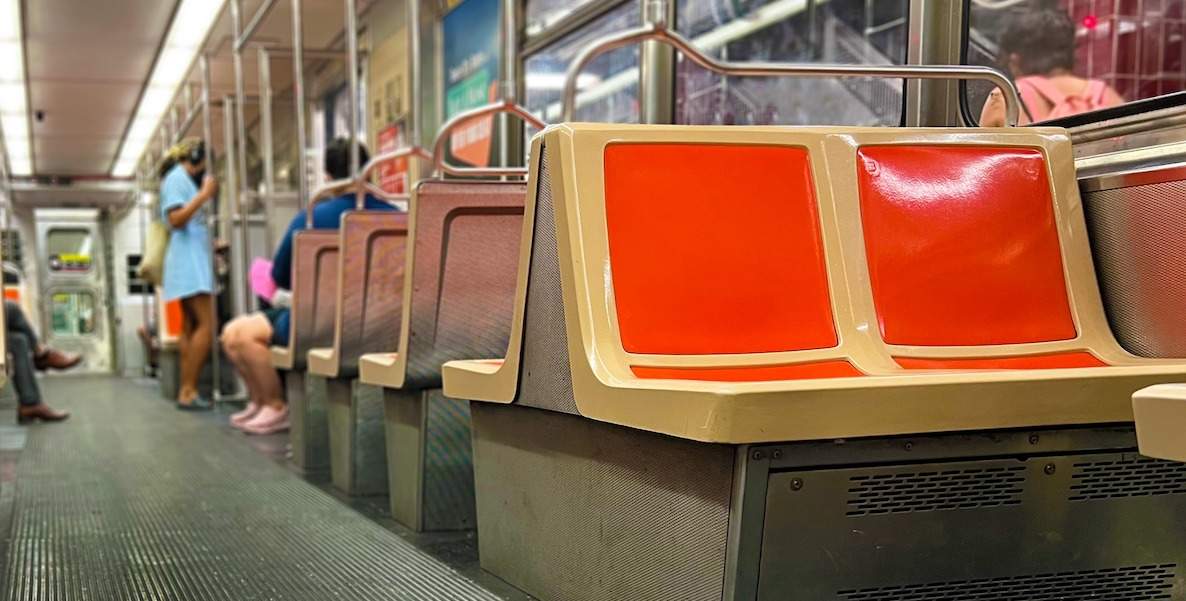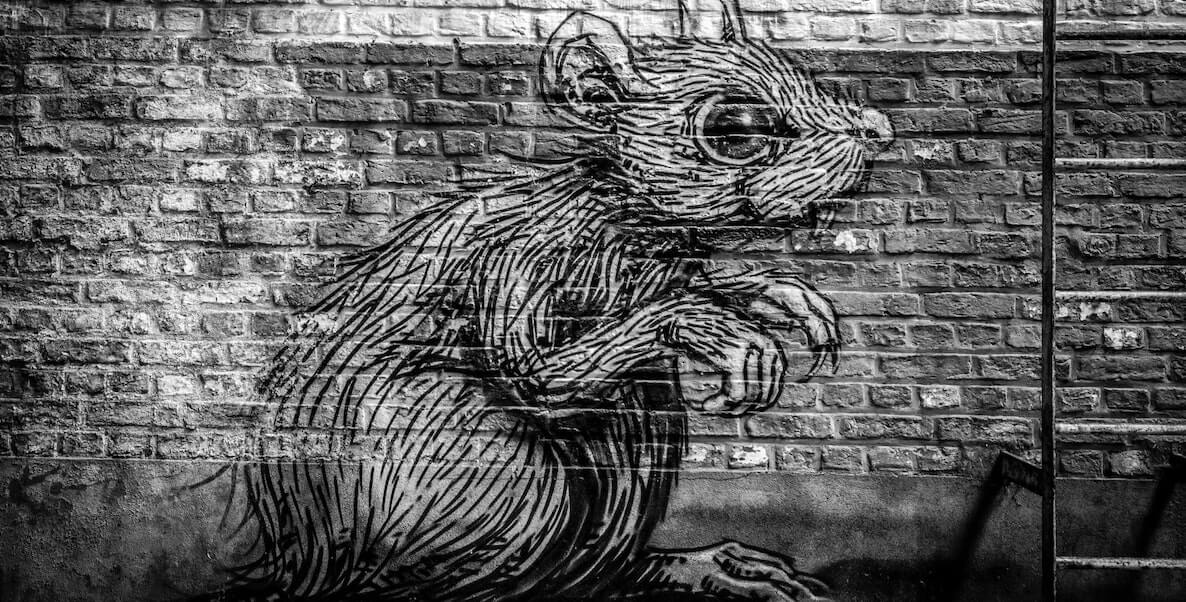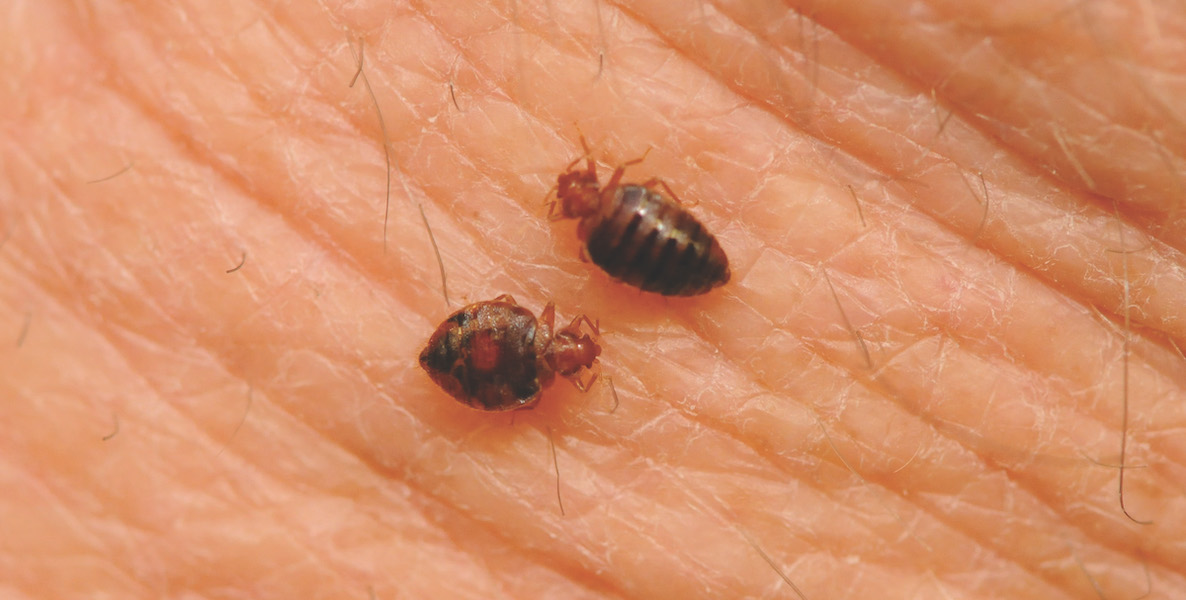![]() Rats, I am sorry to inform you, are very likely enjoying big-city life far more than most of us right now. We’re hunkered down for a pandemic winter, socially distancing and working our way through the Netflix catalog; they’re out cavorting in public parks, soaking in some Vitamin D, enjoying meals with friends, and marveling (one might imagine) at the relative lack of car and foot traffic that’s heretofore spoiled their fun.
Rats, I am sorry to inform you, are very likely enjoying big-city life far more than most of us right now. We’re hunkered down for a pandemic winter, socially distancing and working our way through the Netflix catalog; they’re out cavorting in public parks, soaking in some Vitamin D, enjoying meals with friends, and marveling (one might imagine) at the relative lack of car and foot traffic that’s heretofore spoiled their fun.
This is, at least, what I have witnessed on the Ben Franklin Parkway, Philly’s so-called Champs-Élysées, which is now also Rat Central. On several occasions over the past couple months, I have spotted (and screamed at, ran from, and recorded) dozens of rats on the stretch of land between Sister Cities Park and Shakespeare Park, the beautiful open plaza in front of the Free Library.
Walk along the sidewalk that traverses the north side of the Logan Circle on any given afternoon, and you can see them, in full daylight, scampering alongside the sidewalks, sauntering between bushes, fat and happy and unafraid. One day, I saw one big guy (gal?) haul his/her own trough-sized bag of Cheetos under a tree; several times, I’ve seen them frolic like kittens around occupied (!) benches.
Aside from the obvious gross-out factor and troubling post-apocalyptic optics of it all, this is a public health issue — everyone from teenage skateboarders to young families to unhoused citizens regularly hang out around here. So I decided to see if the city would do something about it.
Over the course of four weeks this winter, I do the following:
- I dial 311 to report rats on the Parkway. I’m caller number 33 in line.
- After a few minutes of holding, I hang up, try again a few days later. Caller number thirty-something again, hang up again.
- I try the 311 app, where I report it … or so I thought. Alas, I never receive a confirmation number. So … user error, maybe?
- I remember Vector Control, which is the unit within the Philadelphia Department of Public Health that deals with mosquitos and rats, as they are disease spreaders. (Full disclosure: I have an abiding affection for the professionals at Vector Control because they once saved my family—and possibly my marriage—from a gang of wall rats. Long and disgusting story, but one with a happy ending, mostly thanks to Vector.)
- I call Vector and tell the woman who answers the phone that I have seen rats on the Parkway. She takes my name and number and promises Vector will call back.
- Vector does not call back.
- The following week, I call Vector again. Speak to the same woman, leave the same message. She remembers me, says they will call me back.
- Vector does not call back.
- Another couple weeks go by. I see more Parkway rats. It snows. The rats love the snow! The rats are living their best life!
- I call and leave a message on Vector’s answering machine.
- I try the 311 app again. This time, it takes. My complaint is filed under “Park Conditions (Safety & Maintenance).”
- I decide to also call 311 again in hopes of speaking to a real, live person. I am third in line. And then … I get a person!
- The 311 operator tells me that I should call Vector.
- I decide to call my Councilperson—Council president Darrell Clarke, who also represents the swath of land where I see the rats—to see if they might have any more insights or sway here. His office tells me that the answer is … to call Vector. The staffer I speak to says that she, too, will send a note to Vector.
- I call Vector and leave another message on the machine.
- I call the Center City District to see if they have a special way of dealing with rats. Their way of dealing with rats is to call … well, you know this by now.
- One day later — just as I started to assume the rats had won this round, Vector calls back. They’re sorry for the delay, the Vector guy says. He did get my messages. They’ve been really slammed. He asks several detailed questions about the exact location of the rat sighting — he’s pulled up an overhead map of the area. He tells me he knows exactly where I’m talking about, and they’ll have someone out soon — this week — to go tackle the problem.
That was exhausting.
It would finally seem, though, that Vector’s on the job now. But what’s the story with the rats here? Why did this take so long? Is this a Philly service issue, a Covid-related anomaly, a rat-takeover issue (shudder), or some perfect pest storm of all of the above?
“We make it easy for rats to be near us”
![]() James Garrow, the director of communications for the Philadelphia Department of Health, is an amiable guy who is less surprised to hear about the Parkway rats than he is to hear that it took Vector so long to call back. “They usually get back in a day or so,” Garrow says. (This actually does reflect my previous Vector experiences.)
James Garrow, the director of communications for the Philadelphia Department of Health, is an amiable guy who is less surprised to hear about the Parkway rats than he is to hear that it took Vector so long to call back. “They usually get back in a day or so,” Garrow says. (This actually does reflect my previous Vector experiences.)
As it happens, rat complaints are down right now. This past January, Vector Control had 183 reports, compared to 209 over the same period last year—and beyond that, all of 2020 actually saw fewer complaints, at 2,526, than previous years (3,042 in 2019 and 3,025 in 2018).
Given that complaints are down, you might think Vector would have less to do, but you’d be wrong. Garrow says that complaints are simply an issue of what people actually see, as opposed to an accurate reflection of rat life.
“We’ve actually talked with a few other cities,” he says. “You know, even in New York City and New Orleans, where, at the beginning of the pandemic, we were reading about rats going crazy. But now, after a few months of data, they’re saying their complaints are down overall, too.”
New York City, by the way, is reportedly home to some 2 million rats, but when it comes to similar estimates in Philly, neither Garrow nor Vector will venture even a ballpark figure—too hard to accurately calculate, the Vector pros consistently tell Garrow. In October, though, the pest-control company Orkin did rank Philadelphia as the 7th “rattiest” city in America, sandwiched between Detroit and Baltimore, and lagging four slots behind New York, which fell after Chicago and L.A.
Garrow will say this: “Every big city in the world deals with rats. And in a city as old as ours, well this is part of it. The sewers are old, the buildings, the housing stock.”
Michelle Niedermeier, the Community Integrated Pest Management and Environmental Health Program coordinator for the state’s urban pest management outreach office, takes it one degree further: “There are a number of reasons we have rats,” she says. “We’re built on streams that got put into concrete tubes, and so we essentially created a habitat for them. And they’re commencal rodents, meaning they eat from our tables.” In short, she says, “we make it easy for rats to be near us.” The good news here? Philadelphia is one the few cities left, she says, that has a rat control unit. (Well, it’s good news for Philly, anyway.)
Here’s a silver lining for you to contemplate: Our rats are just your basic sewer rats. People in the Pacific Northwest also regularly deal with something called “roof rats” that live in trees and, yes, come at a house from above. And if that doesn’t make you marginally happier to be a Philadelphian, I don’t know what to tell you.
Anyway, Garrow says, if sightings are down, that’s likely thanks to the fact that rats might need people but they hate to be around them. And during a pandemic, of course, there are far fewer people to avoid than before. Somewhere like the Parkway, where there’s usually a ton of cars and people, he says, “the rats were there, but hiding all the time.” Now, with fewer threats, “the rats are braver.’
Niedermeier, for her part, says she’s not sure it’s about being emboldened as much as it is about being “opportunistic.” That there are more rats out and about in different areas is, she believes, what it has always been about to the rats: food and water and shelter.
![]() If the on-and-off restaurant shutdowns have meant less food in, say, the Sansom street dumpsters, the rats will simply go where there is more food. “You have to really credit them for being so adaptive and intelligent,” Niedermeier says cheerfully.
If the on-and-off restaurant shutdowns have meant less food in, say, the Sansom street dumpsters, the rats will simply go where there is more food. “You have to really credit them for being so adaptive and intelligent,” Niedermeier says cheerfully.
And as far as shelter goes? This is where Vector comes back in, Garrow says: Anywhere there are low-lying plants and natural ground cover, rats can burrow and “really thrive.”
“There’s no official term for them, but we do know there are places where the rats tend to harbor”—places with lots of low plants and bushes that tend to look great and fill out a garden and not need a ton of upkeep. Places like our parks, in other words. Rittenhouse Square. The grounds of the Philadelphia Museum of Art. The garden around Eastern State Penitentiary. Franklin Square. And, yes, the Parkway. There are a great number of these places all over the city.
“And so we’re out focusing more and doing regular checkups and baiting in these places, especially now that they’re lower in traffic, which means the rats are getting bolder in expanding their area and creating more burrows.” (Baiting, in case you’re curious, involves putting poison some 18 inches below the round, down into the burrows. The poison makes the rats thirsty; they come up for water, and the water activates the poison.)
Another thing: As frustrating as it felt to not get much meaningful response from my councilperson or the CCD or 311 beyond the repeated suggestion that I spend more time calling Vector, this is, in fact, preferred protocol, Garrow says. The experts at Vector prefer to speak directly to the person who spotted the rat, because they generally ask several followup questions as to the time of day and exact location, details that often get left out or lost in translation through another middleman in the city.
In short: The proper way to deal with rats when you see them on public or private property is to skip every other city entity and call Vector directly (215-685-9000). You might need to leave a message. You might need to follow up. And you should! As Niedermeier says, “we’re already dealing with one plague. We don’t need another one.”
She also points out that the best route to dealing with rats is actually still prevention. It might be worth reconsidering any low-lying plants around your own city property, and, obviously, carefully sealing and discarding your trash and recycling, both in public and private spaces.
And terrible as this entire vein of city living may be, she adds, here’s a silver lining for you to contemplate: Our rats are just Norway rats, she says. Your basic sewer rats. People in the Pacific Northwest have sewer rats like Philly, but also regularly deal with something called “roof rats” that live in trees and, yes, come at a house from above. And if that doesn’t make you marginally happier to be a Philadelphian, I don’t know what to tell you.







